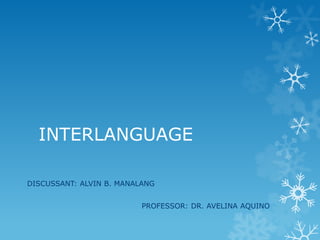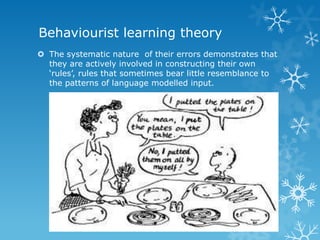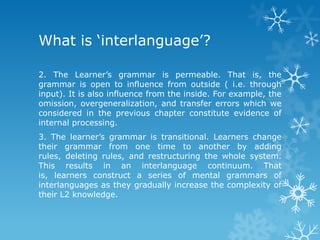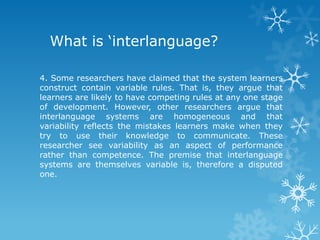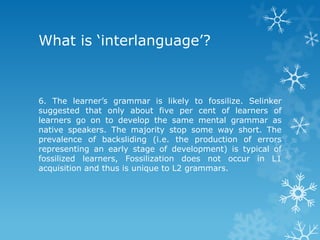1. The document discusses behaviourist and mentalist theories of second language acquisition. Behaviourism views language learning as habit formation through stimulus-response reinforcement, while mentalism posits an innate language acquisition device.
2. The concept of "interlanguage" is introduced, referring to a learner's unique linguistic system that draws on their first language but is also influenced by the target language. An interlanguage is rule-governed but permeable and transitional as a learner's grammar develops over time.
3. A computational model is presented where input is processed into intake and stored as L2 knowledge within the "black box" of the mind to produce learner output. This conceptualizes second language acquisition as analogous
